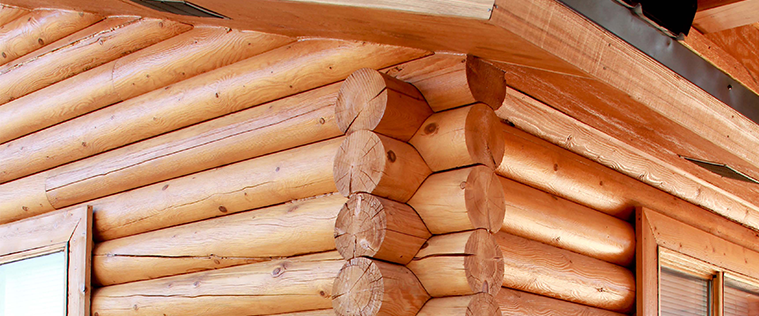
Essential Tips for Log Home Maintenance and Restoration

Introduction:
Log homes exude rustic charm and timeless appeal, but they require regular maintenance to preserve their beauty and structural integrity. In this guide, we’ll explore essential tips for log home maintenance and restoration, ensuring your beloved retreat remains a sanctuary for years to come.
Inspecting and Sealing:
Regular inspection is crucial for identifying any signs of wear and tear on your log home. Check for cracks, gaps, or signs of insect infestation, particularly in areas prone to moisture. Promptly seal any openings with a high-quality caulking or sealant to prevent water infiltration and pest damage.
Managing Moisture:
Moisture is the enemy of log homes, leading to rot, mold, and decay if left unchecked. Keep gutters clean and free of debris to ensure proper drainage away from the home. Install adequate overhangs, gutters, and downspouts to divert water away from the foundation. Consider applying a water-resistant coating or stain to protect the wood from moisture penetration.
Staining and Finishing:
Regularly staining and finishing your log home is essential for preserving its beauty and protecting it from the elements. Choose a high-quality stain or finish specifically formulated for log homes, and follow the manufacturer’s instructions for application. Apply a fresh coat every few years to maintain the wood’s natural color and integrity.
Preventing Pest Infestation:
Wood-boring insects such as termites and carpenter ants pose a significant threat to log homes. Take proactive measures to prevent pest infestation by keeping the perimeter of your home clear of vegetation and storing firewood away from the house. Consider treating the wood with a borate-based solution to deter insects and protect against decay.
Regular Cleaning:
Regular cleaning is essential for maintaining the appearance and longevity of your log home. Use a soft-bristled brush or broom to remove dirt, dust, and debris from the surface of the logs. Avoid pressure washing, as it can damage the wood and force water into cracks and crevices. Instead, opt for gentle cleaning solutions formulated for log homes.
Addressing Rot and Decay:
If you discover any signs of rot or decay during your inspections, it’s crucial to address them promptly to prevent further damage. Remove any affected wood and replace it with new, treated lumber. Apply a wood preservative to the surrounding area to prevent future decay and ensure the structural integrity of your home.
Maintaining Chinking and Caulking:
Chinking and caulking are essential for sealing gaps between logs and preventing water infiltration and air leakage. Inspect the chinking and caulking regularly and repair any cracks or gaps as soon as they appear. Use a high-quality chinking or caulking material that is compatible with your log home’s construction and climate.
Ensuring Proper Ventilation:
Proper ventilation is crucial for preventing moisture buildup and maintaining indoor air quality in your log home. Ensure that attics, crawl spaces, and basements are adequately ventilated to allow for proper airflow. Consider installing vents or fans to improve air circulation and reduce humidity levels.
Professional Maintenance and Restoration:
While many aspects of log home maintenance can






